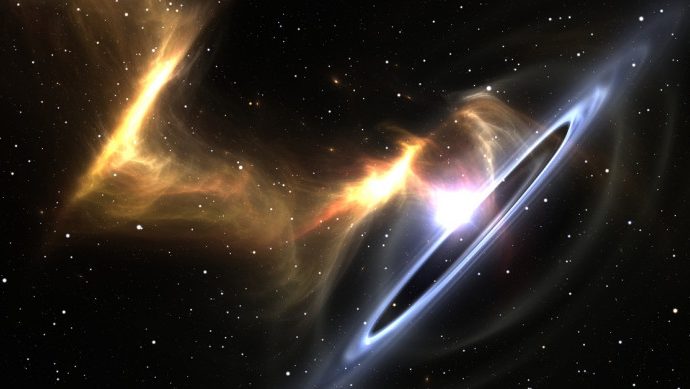Black holes have traditionally been believed to have formed exclusively from stellar remnants. New indirect evidence suggests otherwise.
Source: Interesting Engineering
Supermassive Black Holes (SMBHs) have, until now, traditionally been believed to only form after the explosion or collapse of a star.
The gravitational force of a star collapsing in on itself at the end of its lifespan — after a hypernova explosion — creates a black hole.
These, in theory, become Supermassive Black Holes by sucking in surrounding matter until they grow to an enormous size.
There is one big problem with this theory, but new research by researchers at Western University in Ontario, Canada, may provide us with an answer.
The problem
The outward pressure of a star’s nuclear fusion is what prevents it from collapsing under the gravitational force created by its own mass. When the energy dissipates, the star collapses in on itself. Then, a black hole forms and becomes larger by ‘feeding’ on its surroundings.
This takes a very long time — Supermassive Black Holes form over the course of millennia.
The problem is that scientists have observed SMBHs that are too old to have had enough time after the Big Bang, and gradually form into the space giants that they became.
For example, one SMBH was discovered by astronomers in 2017 that was much too large, especially to have been so large 690 million years after the Big Bang.
New research findings
Two researchers at Western University in Ontario, Canada, believe they might have an answer. Their new theory, called ‘direct collapse,’ attempts to provide an explanation for these ancient SMBHs.
The authors are Shantanu Basu and Arpan Das. Basu writes that SMBHs were able to form very quickly in the early universe before the growth was halted by the radiation of forming stars.
In direct-collapse black holes, Universe Today reports, the Eddington Limit regulates mass growth. Ancient black holes could exceed that limit slightly, the researchers say. They call this ‘super-Eddington accretion.’
“Supermassive black holes only had a short time period where they were able to grow fast and then at some point, because of all the radiation in the universe created by other black holes and stars, their production came to a halt,” Basu explained in a press release published on Eurekalert.org.
“That’s the direct-collapse scenario.”
“This is indirect observational evidence that black holes originate from direct-collapses and not from stellar remnants,” Basu continued, putting a spanner in the works for a long-held belief in the scientific community on the formation of black holes.
Their findings are published in a paper, called ‘The Mass Function of Supermassive Black Holes in the Direct-collapse Scenario,’ found in The Astrophysical Journal Letters.

































Leave a Comment
You must be logged in to post a comment.